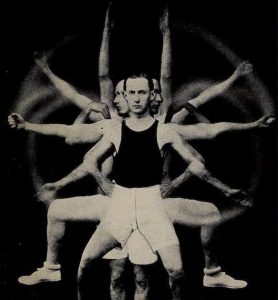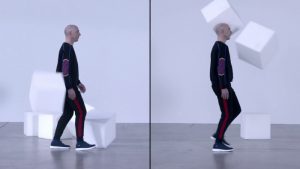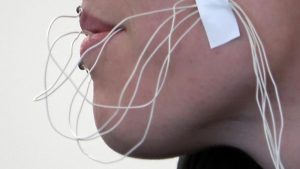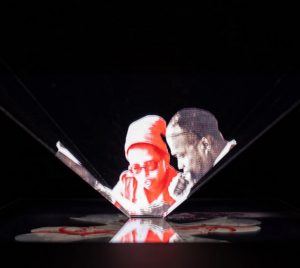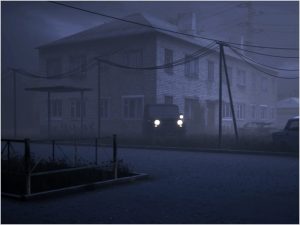I can’t think of a place that’s more artificial, more regulated and more frustrating than an airport. With each passing year, the rules to navigate it get more draconian, the security procedures more invasive and its design more standardized. Yet, we are all expected to comply and accept what would be deemed unacceptable anywhere else.
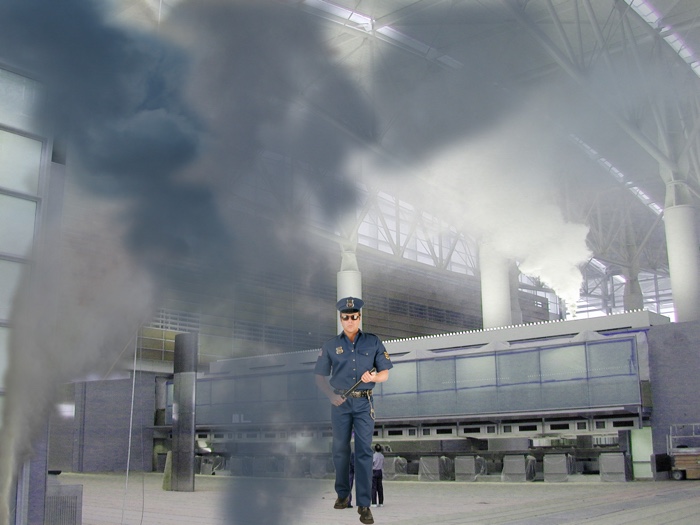
Photo courtesy of Stéphane Degoutin and Gwenola Wagon
Artists and researchers Stéphane Degoutin and Gwenola Wagon have investigated and condensed the schizophrenia of international airports in performances, research and more recently in a book.
In their works, the artists dissect all the idiosyncrasies and absurdities of international airports.
Their analysis led them to speculate a Terrorism Museum, a space that places the traveler in a maximal state of alert. One roams inside visible and invisible security devices, which tend to cancel the slightest probability of a threat. Yet, in a vicious circle, the more present is the surveillance, the more real the threat seems.
Their research has humour, bite and darkness. What makes the work of Degoutin and Wagon particularly fascinating is how they draw parallels between airports and other areas of life: social media, wealth inequalities, western-centrism, etc. Their investigation becomes particularly disturbing when it details how many of tomorrow’s most intrusive technologies are being rehearsed in terminals across the world: the algorithms that analize your facial expressions, the driverless vehicles or the bees that sniff drugs and explosives.
I discovered their work last Summer while i was visiting the exhibition Aéroports / Ville-monde at the Gaîté Lyrique in Paris. Their installation featured copies of a Psychoanalysis of the International Airport – Museum of Terrorism booklet that compiled evidences of the ‘autistic architecture’ of airports and kept visitors glued to uncomfortable little chairs. Like everyone else in the room, I was as fascinated by the publication. Like everyone else, i asked the gallery shop staff if/where/how i could buy a copy. I couldn’t. Until now. The artistic duo has just published a book that delves with even more depth into the issue: Psychanalyse de l’aéroport international (available only in french so far.)
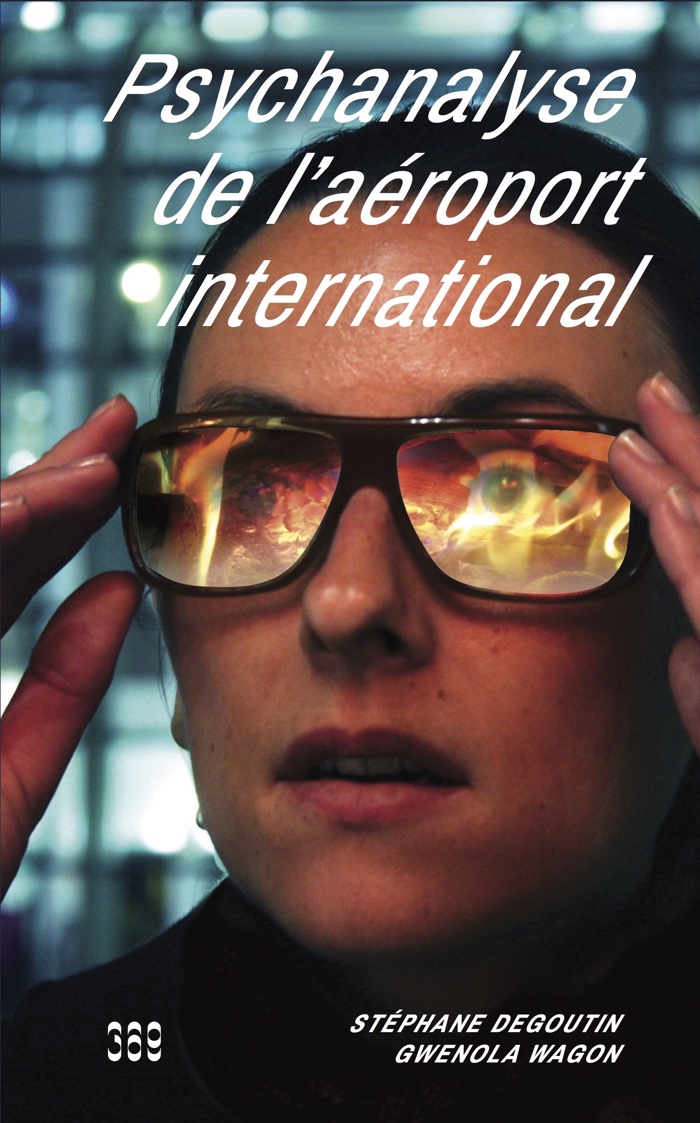
Stéphane Degoutin and Gwenola Wagon, Psychanalyse de l’aéroport international
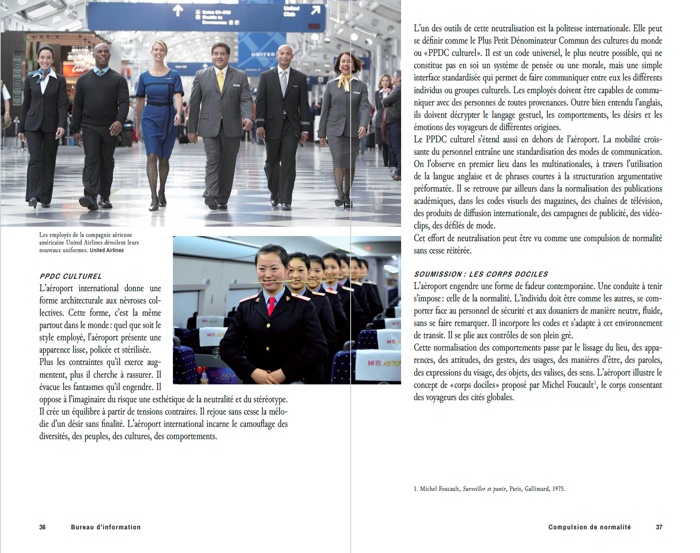
Stéphane Degoutin and Gwenola Wagon, Psychanalyse de l’aéroport International
This was my cue to get in touch with the artists and ask them about their research on airports. Stéphane Degoutin teaches at ENSAD in Paris and is particularly interested in researching “mankind after man, the contemporary city after public space, architecture after pleasure.” Gwenola Wagon has produced numerous sound and moving image installations and is an Assistant Professor at the University of Paris at St. Denis. Together they founded Nogo Voyages.
Hi Gwenola and Stéphane! You call airport a “laboratory of modernity.” Could you tell us why?
SD: The airport is where different promises of the modern world are concentrated: the promise of moving freely around the globe, the promise of unlimited shopping,the promise of a completely rational organisation and the promise of a perfect surveillance. It embodies the desire of mastering the world. Yet, it is also the place where these promises meet their limits and their contradictions.
GW: The airport is at the crossroad of all kinds of transport (objects, animals, people). Its images of surveillance and control are relayed by its infrastructure and augmented by the ones that travelers make. Although matter is not teleportable, imagination still allows us to race through the stages of circulation. The airport becomes the place to fantasize about bodies propelled far away at high speed. Our writings are punctuated with documents: images, texts, news items, quotes, found fragments, testimonies with which we try to recompose the dreams of this place.
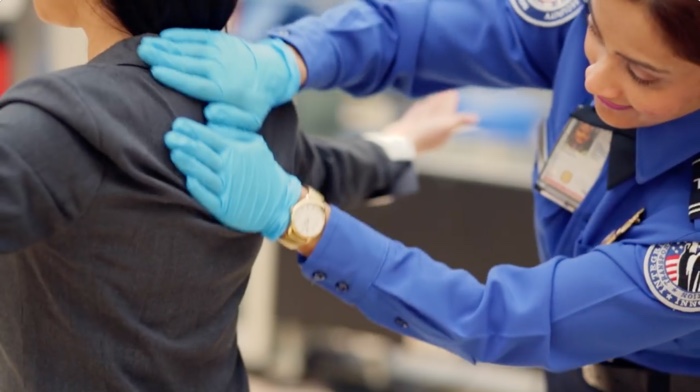
Photo courtesy of Stéphane Degoutin and Gwenola Wagon
And do you see signs that the invasive infrastructure of control over bodies and behaviour of this laboratory might be applied somewhere else in our daily experience of the city?
SD: Yes indeed. The control procedures which are first tested in the airport are then applied in many places in the city, see for instance the metal detectors, which have become common in many malls, museums and other public buildings and in many metro systems around the globe. In the LA metro system, a body scanner has been tested.
GW: The airport is an archetypal place, in terms of both space and behaviour. In the book, we have a chapter about what we call “Cultural LCD”, which can be defined as the Least Common Denominator of world cultures. A universal code that would be as neutral as possible, a standardized interface that allows different individuals or cultural groups to communicate with each other. However, the airport model is expanding further and further and contaminating railway stations, institutions, monuments, stadiums, concert halls, museums, international hotels, malls and urban duty-free shops, restaurants, museums, schools, universities, offices, motorway service areas, etc.

Stéphane Degoutin and Gwenola Wagon, Terorism Museum (video still), 2009-2013
I had a look at the video of the tour of the TERRORISM MUSEUM and was wondering how much complicity you had with the airport authorities. Your slow path and behaviour seem a bit at odd with the frenzy usually displayed by travellers and people working at the airport. You all looked a bit suspicious. So did you have to ask for some authorisation to do this tour inside the airport? Did they facilitate in anyway a tour that deconstructs the architecture of control and paranoia they deploy?
SD: For the Terrorism Museum project, we wanted to guide groups of visitors in the terminal 1 of Paris-Charles-de-Gaulle Airport, to speak of questions related to terrorism and surveillance. We asked an actor to act as a guide. He was whispering in a microphone a series of texts, which were transmitted to the ears of the visitors via a wireless system. It was really quite impressive to walk inside the terminal while visiting a museum dedicated to terrorism, along with the travellers, the police, the military and the homeless.
We did have an authorisation, thanks to the curator of this event, Andrea Urlberger, who was very persistent: she spent two years to get the proper authorisations. She wanted to host a series of art works in the terminal, including ours. She had previously worked with an airport in Munich (Germany), and there was no problem at all, but Paris was a different story… In the end, we said the title of the project was «Airport Museum» instead of «Terrorism Museum». Otherwise, it would have been impossible.
Why did you call the work Terrorism Museum? I understand the “terrorism” half but what is the significance of the term ‘museum’ in this context? There’s no display of artefacts.
SD: The idea is to create a museum of questions. We believe that the notion of « terrorism » is complex and we gathered a lot of texts by philosophers, press articles or by the terrorists themselves. We created a montage of these texts and we looked for a way to display them in an airport. We first thought of a virtual reality system, so that one could visit the museum by oneself, just by downloading an app on your cellphone. The texts would be geolocalised and you would visit them just by hanging around the airport. You would meet Bin Laden in the duty free and Habermas in the toilets, for instance. We created a prototype, but it was quite inefficient – we found out that the geolocalisation does not work properly in the airport. We presume the networks are blurred on purpose. Anyway, this is why we finally developed a « human » version of the project, with an actor, and we thought it was great.
GW: The museum is not disconnected from reality, it adds an extra layer to the space and superimposes overlays of theoretical questions to reality. The public visits it by walking through the real place, by making its way through the crowd, looking at shop windows, shopping, visiting the airport, etc. We developed this idea of a stealth museum to explores questions related to all the post 9/11 literature which, we thought, could fit inside a transportable museum that infiltrates directly the places which logic it questions and that uses available networks (GSM, Wifi, GPS…) to insinuates itself within its space. Nothing indicates its existence. Nobody knows you’re a visitor of the museum.
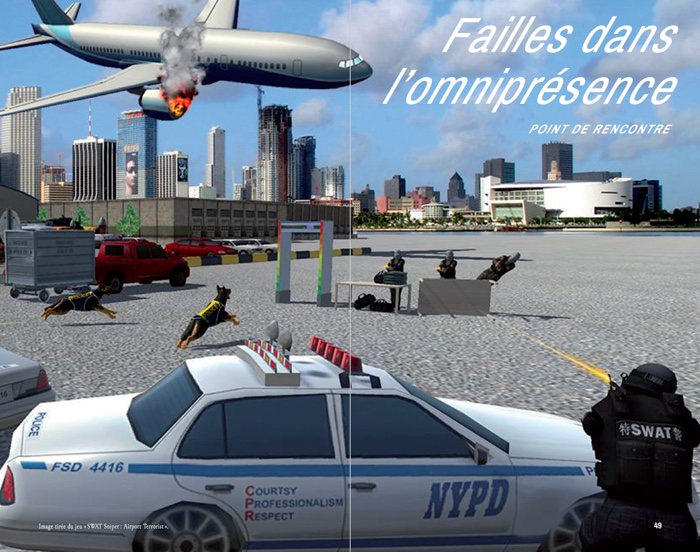
Photo courtesy of Stéphane Degoutin and Gwenola Wagon

Photo courtesy of Stéphane Degoutin and Gwenola Wagon
I remember the document you were showing at the Gaîté Lyrique for the exhibition Aéroports / Ville-Monde. It was full of wit, humour but darkness too. I sat there for a long time, reading through it and i sometimes think about its content when i have to take a plane now. How different is the book “Psychanalyse de l’aéroport International” that you are releasing with 369 editions? How much does it built upon the document i saw in Paris last year? And how much does it differ from it?
SD: The document you are referring to has first been produced for an exhibition at La Panacée in Montpellier. It was presented as a series of leaflets for the different rooms of the Terrorism Museum, so that you could take it with you at the airport. The different leaflets could be assembled together to form a book. The book we release now is based on it, but we have added a lot of texts, many new images, so that it is much bigger now. We also wrote a completely different introduction, to present the project to a wider audience. And it is no longer presented as the guidebook to the Terrorism Museum, but a project in its own right. The graphic design also has been completely changed by Louise Drulhe, the same graphic designer who conceived the first version. The idea was to make a book that would be accessible by a larger audience, not limiting ourselves to art centers. We would also love to publish the book in english of course.
GW: Several additional chapters complete the first artists book presented in Montpellier: L’aéroport comme archétype, Compulsion de normalité, Les somnambules du duty free, Vertige du lisse, Bulle de consolation, Stade oral du lounge et Crise d’hystérie dans la file d’attente (The airport as an Archetype, Compulsion of Normality, Duty Free Somnambulists, Dizziness of Smoothness, Bubble of Consolation, Oral Stage of the Lounge and Hysteria in the Queue), we also have new series of images as well as collected stories about the phenomenon of airport rage or about comfort animals. We want to show that the airport is, simultaneously, an archetypal place and a Crystal Palace of contemporary circulations. It clusters contradictions, connects injunctions of fluidity and of prohibition in order to safeguard us against all possible threats. This lead us to try and analyze it from the point of view of both its own logic and the paradoxical situations it provokes, to the point that it sometimes becomes the receptacle of the wildest stories.
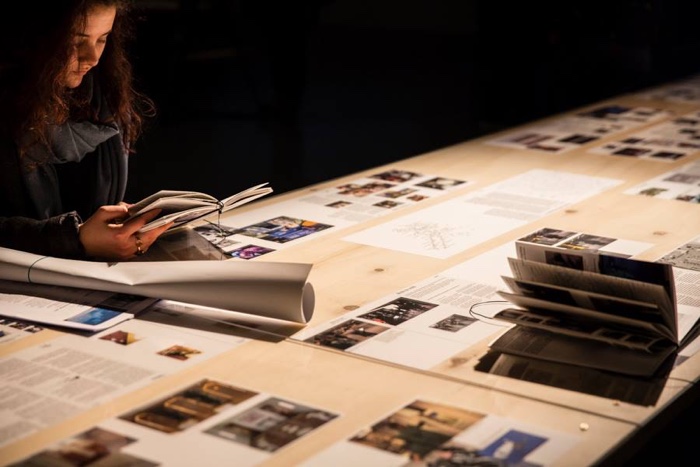
Aéroports ville monde, at the Gaîté Lyrique
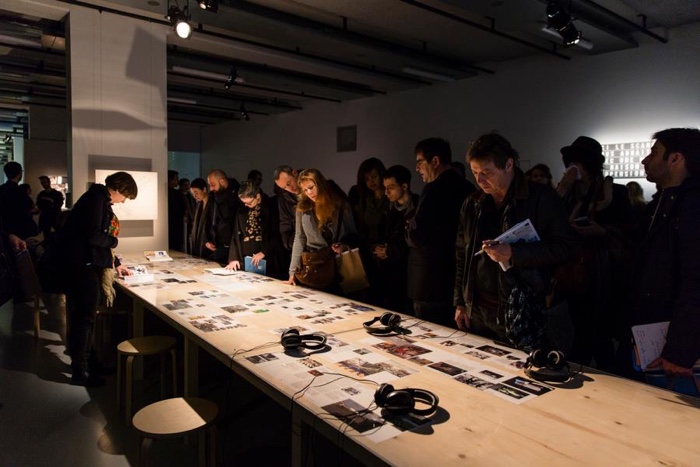
Aéroports ville monde, at the Gaîté Lyrique
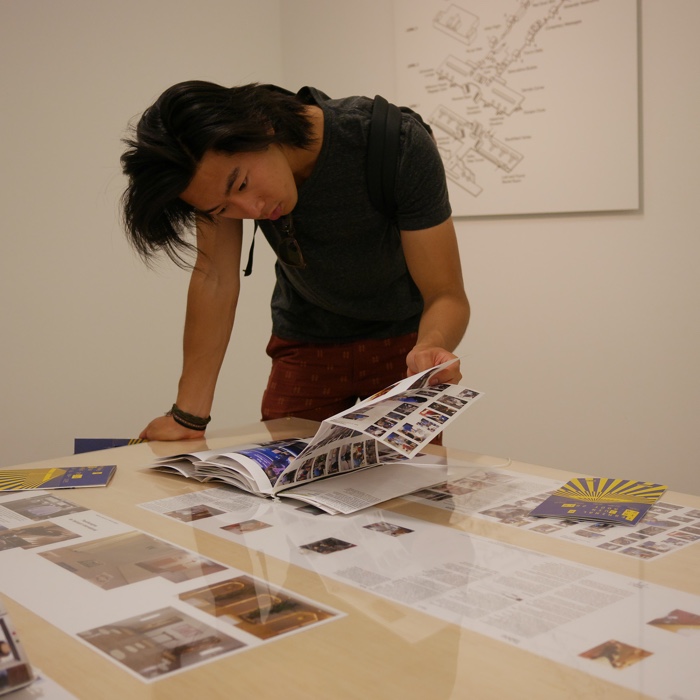
Terminal P, at La Panacée, 2016
What i found most astonishing in your work is the depth and breath of the research that must have preceded the booklet i saw in Paris. Where did the information you gathered come from? interviews? stories read in newspapers/online?
SD: Thank you :) Well, it is an essay, so most of the material comes from our brains. We also gathered a lot of anecdotes from different sources, printed books, online magazines and blogs. We were interested not only in what really happened, but also in what people could fantasise (we hope the difference is clear in the book). We also read a lot of post 9/11 texts, because at that time, a lot of people have been forced to make sense of the events that occurred, and very deep texts have been published. Most of those we have gathered are by continental philosophers, but of course this is a subjective choice.
GW: We often carry out investigations in places that are off-limits (data center, animal farm, storage warehouse) that is why our research projects often emerge from documents that we would not be able to get hold of ourselves. Series of sleeping travelers, drunk, frisked exhibitionists… these documents and their captions disrupt the dramaturgy of our writings.
Many of the images come from advertisement. We divert them into another narrative that does not sell air conditioning, detectors nor robot guides. Instead, the narrative tells the story of the place through documents that we choose and combine with each other, like collages (after a very long selection) in order to reveal our relationship to the place.
For example, when we discovered the video of this woman throwing a tantrum after she’d missed her plane, it resonated with contained emotions that reach a climax through the pressure of extreme moments.
Crazy Airport Lady Throws Tantrum
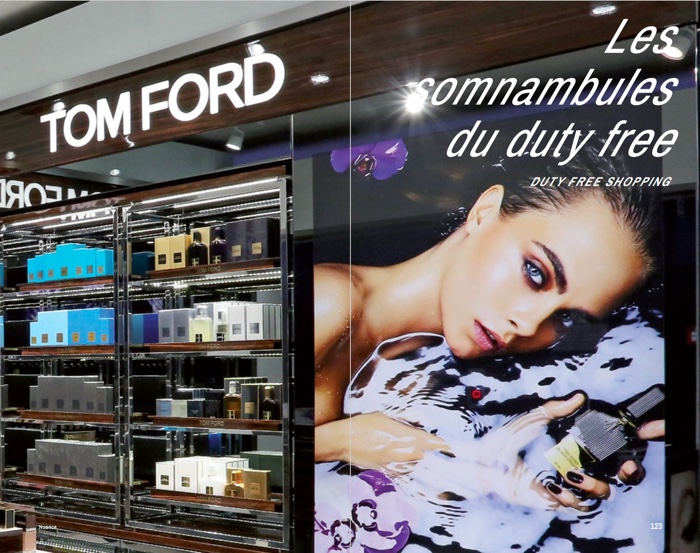
Photo courtesy of Stéphane Degoutin and Gwenola Wagon
In the end, do we still have any form of agency or space for resistance when we move across an airport? Are we condemned to be victims of this infrastructure that regulates and invades our bodies?
SD : One who enters the airport abandons one’s power over one’s own body and free will. Of course, he gains the possibility to travel. It seems to obstruct even the possibility of thinking. This fragment of time during which one will abandon one’s free will to enter the huge machine is fascinating – and a bit frightening. We wanted to question this uncanny place.
GW: We do not seek to create spaces to think about dystopia, nor do we try to unnecessarily dramatize places that are already intrinsically tragic. On the contrary, we seek to show that the pinnacle of the hyper-rationality of certain spaces – such as airports – sometimes confines us to moments of pure absurdity. In the selected documents, certain situations or collages try to conjugate the absurd and the poetical. Laughter meets tragedy, a moment when we no longer know if we should laugh or cry. This tipping point, this ridgeline between emotions that could sometimes seem contradictory, that’s exactly where we try to position ourselves … while trying not to lose sight of the various layers of the place. Let’s hope that, with this book, readers can extend the analyzes and thoughts of the prismatic facets of the place, without forgetting its blind spots and its dead spots …
Thanks Stéphane Degoutin and Gwenola Wagon!
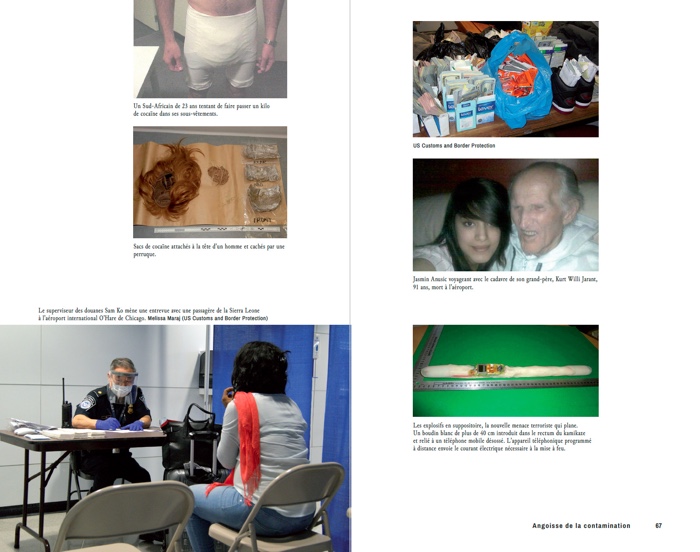
Stéphane Degoutin and Gwenola Wagon, Psychanalyse de l’aéroport International
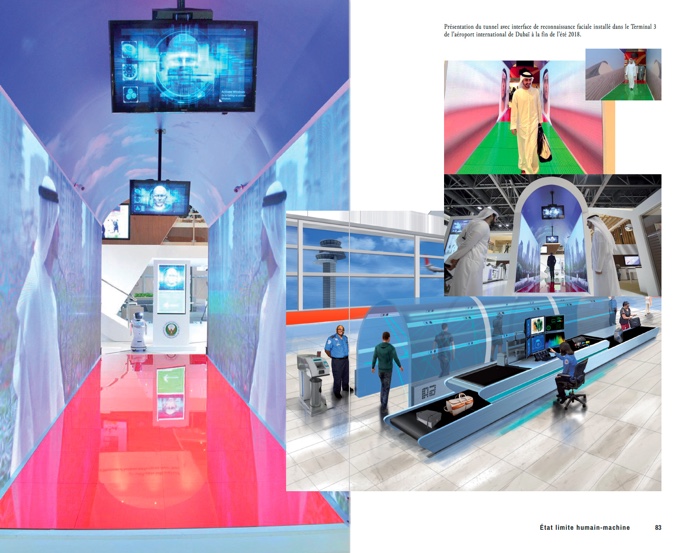
Stéphane Degoutin and Gwenola Wagon, Psychanalyse de l’aéroport International
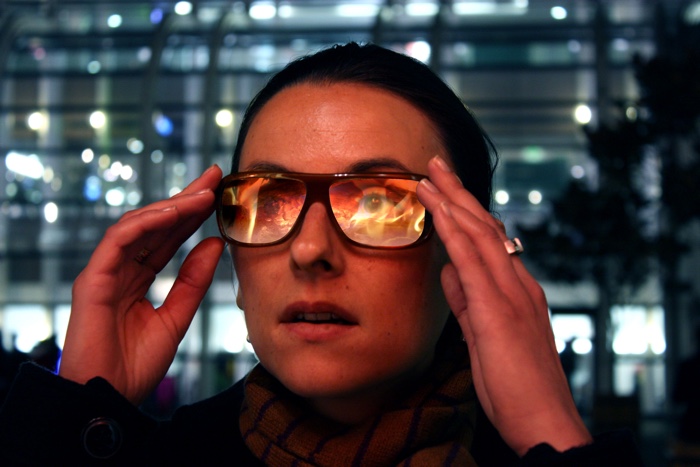
Photo courtesy of Stéphane Degoutin and Gwenola Wagon
Psychanalyse de l’aéroport International, by Stéphane Degoutin and Gwenola Wagon is edited by 369 editions. Right now available only in french. Hopefully, an english version will follow!
Previously: Airports: forerunners of a new world or microcosms of their own?

